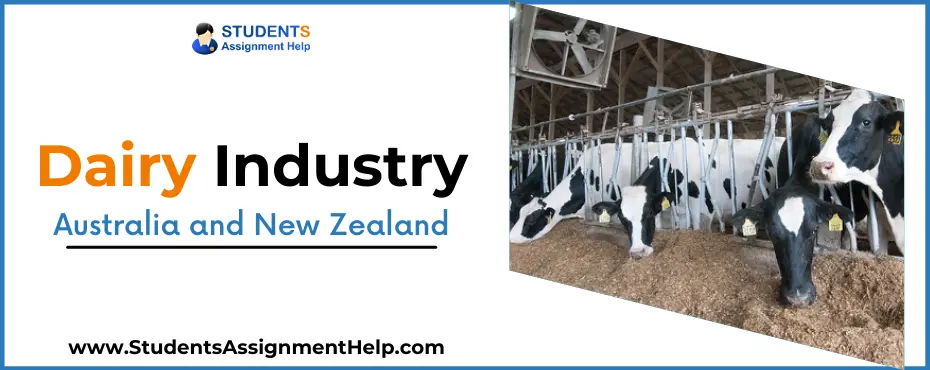Dairy Industry in Australia and New Zealand

Milk or Dairy Industry (In Australia and New Zealand)
Competitive Advantage
The dairy industry in Australia and New Zealand is a major employer and fastest growing sector of the economy. The industry has attained competitive advantage through highly developed processing systems and industry integrated farming methods. It has contributed to the prosperity and socio- economic development of the economy. The industry has competitive advantage over other competitors in the same industry because of easy access to natural resources, access to skilled manpower, liberal policies, lower farm production cost. The industry has increased its production through increasing production per cow, increasing cow numbers and production per hectare. The input cost of the dairy industry in Australia and New Zealand is comparative low when compared to global dairy market. The industry has a competitive advantage over exports as Australian dollar is falling it benefits the industry.
Buy high-quality essays & assignment writing as per particular university, high school or college by UK, USA & Australian Writers
Tasmania dairy farms in Australia and New Zealand benefit from low cost, pasture based production system, moderate climate, highly developed infrastructure and reliable rainfall. The falling Australian dollar is making exports attractive. Australia has the competitive advantage because of the location. The proximity to Singapore, Asia has potential to increase its dairy farming and exports. The industry has the large network of dairy farms. The industry has a competitive advantage over easy access to water at rural areas that help in the establishment of dairy operations. The industry benefit from favourable regulations that help in boosting the exports, low cost of production, tax rebate schemes, promotes investment and innovation (Strategy for Sustainable Dairy farming, 2013).
Absolute Advantage
The dairy industry in Australia and New Zealand had the absolute advantage of low production cost but as input cost is rising the industry is facing tough competition at global market. The production cost is rising because of the rise in global feed prices. The increased use of feed at pasture based region has also raised the cost. Slow growth in the industry is resulting in less investment in the value chain. Researches explain that the dairy industry is losing its absolute advantage because low cost regions have fully utilized the resources. The industry can regain its absolute competitive advantage by achieving efficiencies in downstream milk processing and adapting to innovative marketing strategies.
The industry can regain its absolute advantage by increasing supply chain efficacies, easy market access, liberal regulation, other than the cost of producing milk. The industry has the absolute advantage of low opportunity cost, abundant natural resources and extensive pasture based production system. The supply of dairy products is more than demand in countries like Australia and New Zealand because of less population. The hybrid production system of Australian Dairy is still the world low cost milk producers. The industry to regain its absolute advantage will need to discover new strategies other than the cost advantage (UDV Policy Council Discussion Paper, 2013).
Stuck with a lot of homework assignments and feeling stressed ?
Take professional academic assistance & Get 100% Plagiarism free papers
References
Strategy for Sustainable Dairy Farming. 2013. [Online]. Available at:
https://www.dairynz.co.nz/publications/dairy-industry/strategy- for-sustainable- dairy- farming-2013- 2020/ [Accessed on: 30 May 2014].
UDV Policy Council Discussion Paper. 2013. [Online]. Available at:
https://www.vff.org.au/vff/Documents/UDV/UDV%20has%20a%20vision%20for%20the%20 industry.pdf [Accessed on: 30 May 2014].

